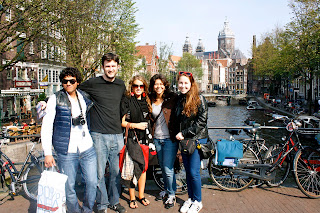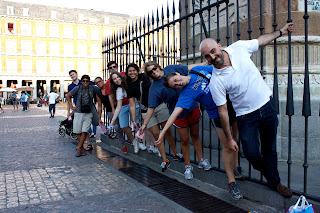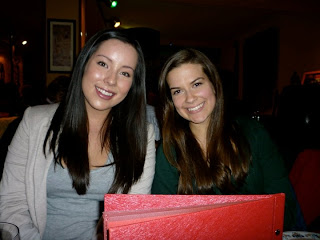Northeastern University
Durante los últimos meses nosotros, los estudiantes de Legal Studies, hemos estado viviendo juntos en un apartamento con una profesora de Derecho de la Universidad Carlos III de Madrid. La verdad, esto ha sido una experiencia increíble que no se debería cambiar. Uno pensaría que vivir con una profesora te cohibiría de salir o algo por ese estilo pero no es así para nada. El alojamiento es básicamente como si vivieras en tu propio apartamento y puedes venir y salir cuando quieras. En cuanto a vivir con una profesora, también es una situación favorable para los estudiantes de Legal Studies ya que si tenemos alguna duda sobre algún tema de nuestras asignaturas, le podemos preguntar. Es un recurso que pienso que se perdería si cambian el tipo de alojamiento al de un anfitrión por estudiante. Sin embargo, no es tan solo el hecho de tener a una profesora ahí para ayudarte pero también es tener a los otros estudiantes de LS ahí contigo que también te pueden ayudar si tienes duda sobre algún tema de Derecho. Entre nosotros, como ya dije aprendemos, ya sea a suponer Nicky contándonos de su practica y lo que ha visto o aprendió en los tribunales o en un bufete de abogados. Si no es Nicky, es alguno de nosotros hablando de un tema interesante que aprendimos en una de nuestras asignaturas. Lo importante de este alojamiento es que estamos constantemente aprendiendo de cada uno y estamos accesible para aclarar dudas si tenemos un examen de nuestras asignaturas en común como Legal Language o Law in Contemporary Spain.
En mi primer año de universidad viví en un sistema más o menos similar, vivíamos los del mismo grado en un piso. Esto lo hizo más fácil para estudiar y como dicho anteriormente aclarar dudas. Claro, esto sólo fue así por el primer año, luego cada uno se fue por diferentes caminos. Sin embargo, pienso que cuando empiezas algo nuevo es bueno tener a las personas que tienen un mismo interés de estudios cerca de ti. Esto es lo que se nos dio oportunidad en mi primer año de universidad y aquí en Madrid. El sistema de alojamiento es ideal para los estudiantes de LS y con una anfitriona como Sabela no hay porqué hacer algún cambio para mejorar el alojamiento.
En mi primer año de universidad viví en un sistema más o menos similar, vivíamos los del mismo grado en un piso. Esto lo hizo más fácil para estudiar y como dicho anteriormente aclarar dudas. Claro, esto sólo fue así por el primer año, luego cada uno se fue por diferentes caminos. Sin embargo, pienso que cuando empiezas algo nuevo es bueno tener a las personas que tienen un mismo interés de estudios cerca de ti. Esto es lo que se nos dio oportunidad en mi primer año de universidad y aquí en Madrid. El sistema de alojamiento es ideal para los estudiantes de LS y con una anfitriona como Sabela no hay porqué hacer algún cambio para mejorar el alojamiento.




































